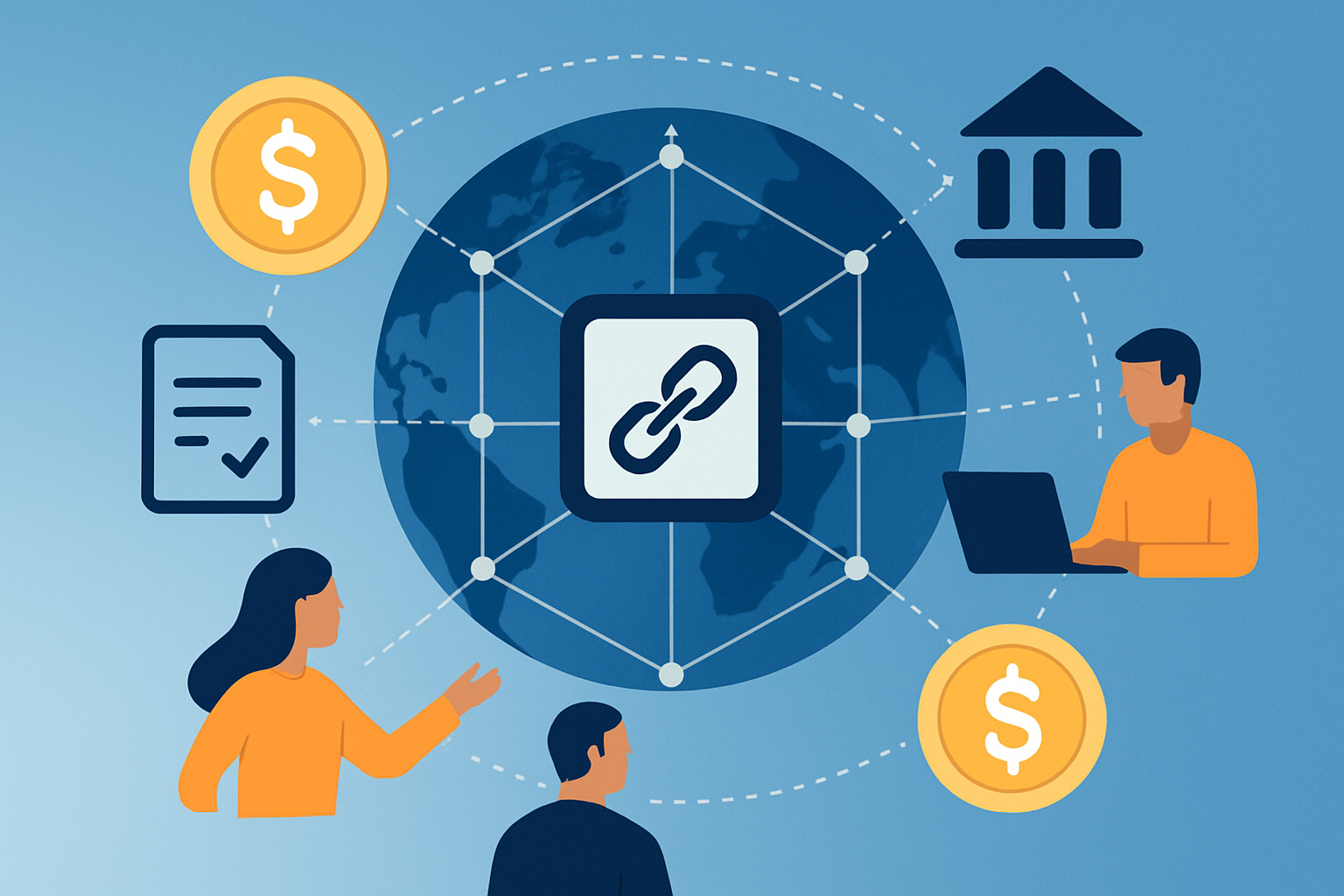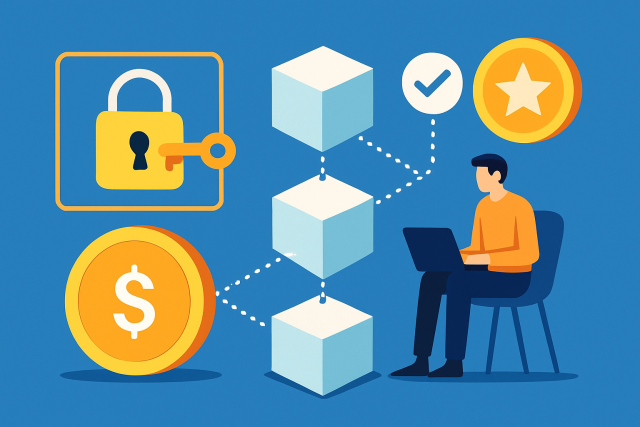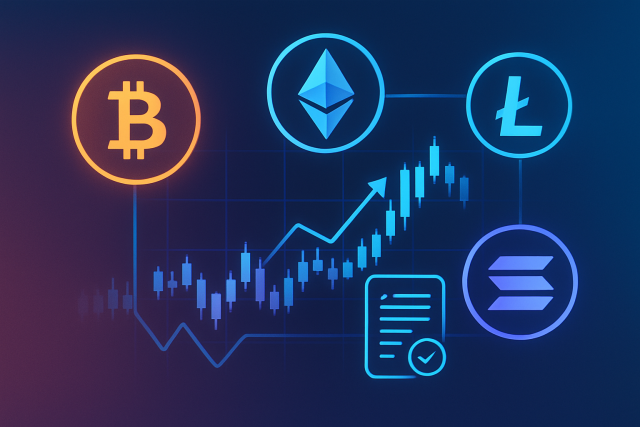How Decentralized Finance DeFi Actually Works


Decentralized Finance or DeFi is shaking up the financial world by rethinking how money flows. It ditches the usual middlemen and creates an open digital financial system that anyone anywhere can join.
What does Decentralized Finance (DeFi) really mean
Decentralized Finance or DeFi as the cool kids call it is a fresh take on how money moves around—built on blockchain technology that pretty much gives the boot to traditional banks and brokers.
- DeFi runs the show without any central authorities like banks or governments breathing down your neck.
- Every transaction gets etched onto transparent public blockchains that you can peek at anytime.
- If you have internet access you are in the game no matter where you call home.
- Financial processes are automatic and programmable through smart contracts that do the heavy lifting for you.
- Users rely on permissionless networks with open doors, no special invite or prior approval needed.
Key Technologies Powering DeFi The Nuts and Bolts Behind the Buzz
DeFi runs on blockchain technology, essentially a digital ledger spread out over a bunch of computers all working together. Smart contracts are like little automated agents—pieces of code that do their job without needing a middleman breathing down their neck.
- Blockchain serves as a rock-solid tamper-proof record you can rely on.
- Smart contracts act like automated middlemen that execute coded instructions without breaking a sweat.
- Ethereum and its cousins provide the sturdy groundwork to build and run those nifty DeFi applications everyone’s talking about.
- Cryptographic security is the unsung hero that keeps data locked up tight and sorts out who owns what without any fuss.
- Decentralized oracles bring real-world info right to smart contracts’ doorstep, triggering actions exactly when they should—no guesswork involved.
DeFi explained in a step-by-step guide you can follow
Using DeFi typically involves connecting a cryptocurrency wallet to decentralized apps and granting permissions to smart contracts. Transactions are then carried out and recorded on a blockchain for crystal-clear transparency.
Get yourself a crypto wallet like MetaMask or Ledger to keep your assets locked down tight.
Connect that wallet to your chosen DeFi app via its website or easy-to-use interface—easy does it.
Take a good look at the smart contract permissions before giving the green light—a little extra caution goes a long way.
Then go ahead and carry out your financial move whether it’s lending or trading.
Finally, don’t forget to check your transaction confirmation and status on a blockchain explorer—staying in the loop feels better.
Common Use Cases and Protocols in DeFi What You Actually See in the Wild
DeFi spans many financial services like borrowing, lending, trading on decentralized exchanges, yield farming and stablecoins designed to keep their value steady.
- Peer-to-peer lending lets people borrow or lend cryptocurrency without relying on a bank.
- Decentralized exchanges or DEXs let you trade tokens without needing permission or trusting a middleman.
- Liquidity pools combine funds from users to keep decentralized trading flowing smoothly—a communal pot that benefits everyone involved.
- Yield farming rewards users who supply liquidity to DeFi protocols, making it a sweet deal you can’t pass up.
- Synthetic assets track the value of real-world assets on the blockchain, providing a clever way to tap into traditional markets without hassle.
- Stablecoins offer cryptocurrency options that stick close to stable assets like the US dollar and help avoid wild price swings.
| Protocol Name | Function | Platform | Key Features | Typical Users |
|---|---|---|---|---|
| Aave | Lending and borrowing | Ethereum | Offers handy flash loans and lets users easily switch up interest rates on the fly | Retail investors and traders who like a bit of flexibility |
| Uniswap | Decentralized exchange | Ethereum | Runs on an automated market maker with liquidity pools — making swaps smooth and seamless | Traders and liquidity providers who enjoy a decentralized vibe |
| Compound | Lending and borrowing | Ethereum | Provides algorithm-driven interest rates, doing the heavy lifting so you don’t have to | Long-term holders looking to grow quietly in the background |
| Synthetix | Synthetic assets | Ethereum | Crafts tokenized versions of real-world assets, opening doors to new trading possibilities | Traders and speculators eager to explore unique markets |
| Curve Finance | Stablecoin trading | Ethereum | Zeroes in on low slippage when trading stablecoins—because every fraction counts | DeFi users and liquidity providers who value efficiency |
| MakerDAO | Stablecoin platform | Ethereum | Issues collateral-backed stablecoins to keep things steady and reliable | Stablecoin users and holders who prefer a solid foundation |
Imagine you want to borrow some cryptocurrency using a DeFi lending protocol like Aave. You start by depositing collateral—say Ethereum—into a lending pool run by a smart contract. This piece of code handles everything automatically and lets you borrow tokens up to a certain part of your collateral's value. Interest piles up openly without banks as middlemen. You can pay back the loan whenever you want to get your collateral back.
Key Advantages of DeFi Compared to Traditional Finance Why It Just Might Be a Game-Changer
DeFi brings a bunch of perks to the table like chopping out pricey middlemen and opening up global financial services to individuals who don’t have access to traditional banks. It boosts transparency in a way that feels pretty refreshing and powers programmable money that can handle nitty-gritty tasks on autopilot.
- Cutting out the middlemen usually means lower fees and quicker transactions.
- Anyone anywhere in the world with internet access can dive right into DeFi services without jumping through hoops.
- Its decentralized nature makes it stubbornly resistant to censorship or shutdowns, kind of like a financial rebel with a cause.
- Blockchain verification makes settlements often fly through faster than traditional systems, saving you precious time.
- Being open-source not only keeps things transparent but also fuels a continuous stream of fresh ideas and innovative financial tools.
- Programmable money gives you the power to handle complex contract logic, going way beyond the usual send-and-receive routine.
DeFi is really carving out its place as the future of financial freedom, handing technology over to individuals without forcing them to jump through hoops set by gatekeepers or get tangled up in geographic boundaries. It’s like finally unlocking the door and letting everyone have a fair shot.
Typical Risks and Common Pitfalls Around DeFi (And What People Often Get Wrong)
DeFi comes with its fair share of risks such as bugs in smart contracts and wild price swings that can make your head spin. There are also user slip-ups and sneaky phishing attacks. It’s worth clearing the air on a few common misconceptions like thinking DeFi is totally unregulated or only for crypto experts.
- If smart contracts aren’t properly audited, those pesky code vulnerabilities can end up gobbling your funds faster than you would like.
- Liquidity providers often find themselves tangled in impermanent loss when asset prices decide to play musical chairs.
- Scams and rug pulls are all too common, so rolling up your sleeves for some serious due diligence is a must.
- Regulatory rules are still finding their footing, which means there’s a fair bit of uncertainty hanging in the air.
- There’s no magic formula for guaranteed profit, so it’s wise for users to keep their eyes wide open and understand the risks before diving in.
A Down-to-Earth Guide to Jumping into DeFi
When diving into decentralized finance (DeFi) for the first time, it’s usually a smart move for newcomers to stick with popular wallets and protocols they’ve heard of. Keep a sharp eye on those transaction fees—they can sneak up on you faster than you’d expect. It’s also worth taking a moment to sift through smart contract audits.
- It’s a smart move to consider hardware wallets like Ledger or Trezor because they boost your security and give you extra peace of mind.
- Take your time to dig into DeFi protocols that have been thoroughly audited and earned a solid reputation for reliability.
- Start small until you’re comfortable enough to dip your toes deeper into the process.
- Make sure you get a good handle on gas fees since they can sneakily eat into your transaction costs more than you might expect.
- Keep your ear to the ground by following community channels and updates regularly. Being in the loop can save you from unpleasant surprises.
- When it comes to decentralized exchanges, stick with trusted names like Uniswap or SushiSwap because it’s like choosing the well-lit path to avoid potential pitfalls.

Frequently Asked Questions
Is DeFi safe to use, and how can I minimize risks?
DeFi comes with risks including vulnerabilities in smart contracts and occasional scams. You can keep risks in check by sticking to audited protocols, using hardware wallets and starting with small amounts. Think of it as dipping your toes before diving in. Doing your homework on projects, staying plugged into community updates and never sharing your private keys or clicking on sketchy links will keep your assets safe.
Do I need technical skills to participate in DeFi?
Not really. Many DeFi platforms are designed with newbies in mind. Having a basic grasp of wallets and gas fees makes the process smoother. You can use user-friendly apps like MetaMask or Uniswap and follow step-by-step guides or join communities to pick up tips. It gets easier quickly.
How do DeFi transactions compare in cost and speed to traditional banking?
DeFi transactions often settle within minutes and are usually faster than typical bank transfers. Fees can spike during network congestion because of gas costs, similar to peak hour traffic on the blockchain. Unlike banks, DeFi operates 24/7 with no middlemen causing delays, but you need crypto to cover those fees.
Can DeFi replace my bank entirely?
Not quite yet. DeFi shines for lending, trading and earning interest but falls short in fiat currency integration and customer support. For now, the best bet is using DeFi alongside your traditional bank, especially for day-to-day spending or insured savings.
What’s the difference between a decentralized exchange (DEX) and a centralized one?
DEXs like Uniswap let you trade directly from your wallet without handing over funds to the platform, which reduces hacking risks and offers peace of mind. Centralized exchanges such as Coinbase hold your funds and handle trades themselves, offering simpler interfaces and support for fiat currencies. This can feel more familiar if you’re used to traditional ways.
Are DeFi earnings taxable?
Yes. In most places, DeFi activities like yield farming or trading are taxable as income or capital gains. It’s a good idea to keep detailed records using blockchain explorers or tools like Etherscan. Consulting a tax professional helps ensure you’re prepared for tax season.






